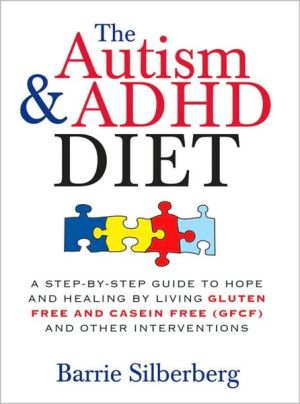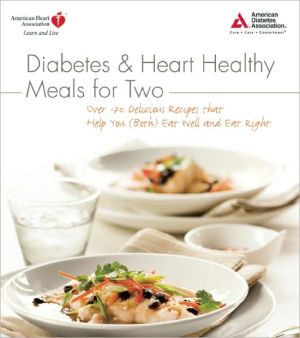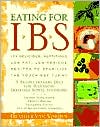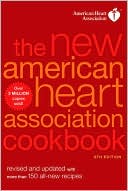The Autism & ADHD Diet
"Huge changes"\| "A different child"\| "A miracle" \| "Vast improvements"\ This is what parents are saying about an amazing diet that is showing extraordinary results in helping children eliminate many traits and symptoms associated with autism spectrum disorders, ADHD, celiac disease, and other conditions. The Gluten-Free, Casein-Free (GFCF) Diet, as well as removing all artificial dyes and preservatives, is hugely effective for thousands of families.\ The Autism & ADHD Diet is your...
Search in google:
The Autism Diet is a parents' guide that provides a detailed account of why this special diet and other interventions should be implemented. Barbara M. Bibel - Library Journal The number of children diagnosed with autism is rising, and parents of autistic children often discover that it is difficult to find solutions. Nutrition is frequently neglected because physicians receive little training in the subject, but many parents and nutritional therapists find that using special diets helps children to calm down, focus, and communicate better. These three books written by parents of autistic children provide useful information about nutrition therapy for children on the autism spectrum; Converse and Lord are registered dietitians certified by the American Dietetic Association. Converse's Special-Needs Kids Eat Right is the most comprehensive, including information about the diagnosis and treatment of autism, special diet plans, and the use of supplements, as well as explanations of the various special diets being used. Lord and Silberberg concentrate on the gluten-free, casein-free (GFCF) diet. All three books provide sound advice about getting children started on the diet, shopping lists, recipes, and dealing with picky eaters. Silberberg offers an excellent list of web sites, including sites providing information about sticking with special diets while visiting other countries. Converse provides an extensive resource guide with materials on both traditional and alternative therapies. All three books are highly recommended; buy Special-Needs Kids Eat Right if you can afford only one.
Because of our son's miracle and the miracles of thousands of others worldwide who have experienced success with this diet and other interventions, I knew that I had to share our story and my knowledge, so that you, too, can achieve the success that we joyfully saw in our own lives.\ When my son was in preschool, he played alone and only ate from a very select group of foods. He was very verbal, yet odd. I thought perhaps he was gifted. At age two, he taught himself the alphabet. At four, he taught himself to read.\ Then, in kindergarten, my son's behavior was horrible. He threw things, screamed, and had uncontrollable meltdowns. He had severe sensory issues, very poor social skills, never changed his diet from peanut-butter-and-jelly sandwiches, macaroni and cheese, milk, cookies, crackers, chips, pretzels, yogurt, cheese, and french fries—and he had mushy stools. He had obsessions, but they were typical boy interests, like Thomas the Tank Engine and Disney movies.\ When my son began first grade at a new school, he had a very difficult time. I kept researching websites about gifted children to find out why my son was different from other kids. Meanwhile, he continued to be in trouble constantly for inappropriate behavior. He was very violent and continued to have horrific meltdowns, and his sensory problems were causing him a lot of pain and suffering.\ I brought articles that I found online to his teacher, showing her the odd behavioral traits and characteristics of brilliant children. They seemed to fit. But some aspects of his behavior did not fit and did not make sense. A multitude of questions kept running through my mind:\ \ Why can't he ever go outside without wearing sunglasses?\ Why does he run away from strong smells in the kitchen?\ Why does he always scream and cover his ears when he is around loud noises?\ Why does he eat mostly smooth foods and is so picky in his eating habits?\ Why doesn't he have friends like the other kids?\ Why is his interaction with other children not typical?\ Why does he always talk nonstop about certain things?\ Why can't he have a typical conversation, like his peers do?\ Why does he fall apart when his routine is changed?\ Why does he have severe meltdowns or crying fits whenever he is even slightly frustrated?\ Why can't he look anyone in the eye while speaking to them?\ Why doesn't he do imaginative play?\ Why is he so fearful of so many things?\ Why did it take him so long to be potty trained?\ Why are his poops never solid?\ \ In the middle of my son's first-grade year, a friend of mine was reading a magazine. Inside was an article about a boy with Asperger syndrome (a form of high-functioning autism). She brought it to my attention immediately and said, "Read this. This is your son." She was aware of my son's odd and disruptive behaviors and knew that I needed answers.\ I read the article and cried tears of joy and tears of sorrow. I was thrilled, because I had an answer. I knew this was what was wrong with my son. Yet, I felt sadness, because my son was autistic. I am still grateful to that friend who had the guts to approach me. She had one goal in mind: to help my son and to help me be able to help him. I am so glad that I was open to hearing this information and using it to give my son the help that he badly needed.\ I called a student study team meeting at my son's school. When I mentioned the "A" word, all of the staff in attendance nodded their heads.\ They told me they had been discussing this and they, too, were fairly sure he was on the autism spectrum. The school counselor gave me several phone numbers to call and seek help.\ This was the beginning of our road to autism—a long, challenging, yet rewarding road. With the help of the school psychologist, we were fortunate that my son received a diagnosis of autism from the California Regional Center system and thus became a client. This agency was able to provide and fund many services to help him on his way.\ When second grade started, we had another team meeting at school to discuss my son's Individualized Education Program (IEP). His behavior was not improving, and the school did not want him there. He was incredibly disruptive in the classroom and on the playground. However, school officials were willing to have professionals observe him, allowing my son to try to prove that he could be fully included in a regular classroom.\ We agreed to meet again in November to decide what to do next. Unfortunately, my son's behavior continued to be horrendous. He constantly was disruptive in class. Ever since my son's diagnosis, I had searched high and low to find answers regarding this thing called autism. One website that was extremely helpful was OASIS (Online Asperger Syndrome Information & Support). OASIS was where I first read about the possible benefits of removing gluten (wheat, rye, and barley, as well as oats due to contamination) and casein (dairy protein) from a child's diet. It sounded insane, because glutens and caseins were all that my son ate. I told myself and everyone else that he would starve if I took away all of his favorite foods. What were these crazy people thinking?\ My son's father (we are divorced) and I returned to school for my son's IEP meeting several weeks before the Thanksgiving holiday break. The director of elementary special education told us that our son did not belong in a regular, fully included classroom and not even in the Special Day Class. We were told that our son had to leave.\ The appropriate environment for him, the team said, was a classroom for children with moderate to severe autism or a classroom for severely emotionally disturbed children. When the IEP meeting was over, we went to observe both of these classrooms. In the first room, we saw several nonverbal children who were stimming intensely (making rapid hand-and-arm movements). These children were being rewarded with dye-filled, gluten-filled cereal. Later I would gasp at the insaneness of this practice for children with autism spectrum disorders.\ We objected, feeling that neither of these placements provided the least restrictive environment for our son. He was a very bright little boy with amazing verbal skills. Neither was the appropriate place for him, and we kindly told the director that our son would never be in one of those classrooms.\ We decided that we had no choice but to try the ridiculous-sounding gluten-free, casein-free (GFCF) diet. With encouragement from several friends, we dove in headfirst. Over the four days of that Thanksgiving break in 2002, we removed dairy products from our son's diet. To our amazement and delight (and also that of the school's staff), our son was a much calmer child when he returned to school after the break. We saw huge changes in his behavior. So, we thought, if removing dairy could do this in basically four days, what could removing gluten do?
Acknowledgments Foreword by Donna Williams Introduction Chapter 1. Our Story, Our Miracle Chapter 2. Before We Begin: First Ditch the Dyes, Preservatives, and Other Problematic Foods Chapter 3. Understanding the GFCF Diet: Answering Common Questions Chapter 4. Ready, Set, Go: Starting the GFCF Diet Chapter 5. The Nitty-Gritty Part: Putting the GFCF Diet into Action Chapter 6. Buying and Preparing GFCF Foods Chapter 7. How to Read Labels Chapter 8. Eating Out, Vacationing, and Hospital Visits Chapter 9. The GFCF Diet in Action: Questions and Answers Chapter 10. Menu Ideas Chapter 11. Dealing with Naysayers Chapter 12. Success Stories from All over the World Chapter 13. Other Interventions, Services, and Diets to Investigate Chapter 14. Spreading the Word Chapter 15. My Son Noah's Story... In His Own Words Resources Index About the Author
\ From the Publisher"In a "nutshell", I thought it was an excellent reference book. I, myself, have tried to use this diet in the past but found it an overwhelming task. Barrie, however, gives you a step by step guide to make your implementation of the diet much easier .....what foods, where to buy foods, and how to stay on the diet while eating out, vacationing, and even for a hospital stay. I certainly recommend adding this book to your personal library." - Parenting Special Needs Magazine \ "Author Barrie Silberberg was inspired to write this book by her personal journey through challenge, hope, love and healing for her son Noah, who has experienced drastic improvements with his autistic symptoms as a result of the GFCF diet. " - Autism Society of America\ "The Autism and ADHD Diet - A Step-by-Step Guide to the GFCF Diet for Children on the Autism Spectrum by Barrie Silberberg is filled with insightful information and useful resources to help those with Autism Spectrum Disorder (ASD) and ADHD implement a diet free of artificial dyes, preservatives, gluten and casein (milk protein). Considered controversial by some, the author addresses this issue in easy-to-understand language, presents relevant scientific study and passionately shares her own remarkable success in alleviating her son Noah's behavioral symptoms of ASD by adhering to the Autism and ADHD diet.\ " - Glutenfreecooking.about.com\ \ \ \ \ \ Library JournalThe number of children diagnosed with autism is rising, and parents of autistic children often discover that it is difficult to find solutions. Nutrition is frequently neglected because physicians receive little training in the subject, but many parents and nutritional therapists find that using special diets helps children to calm down, focus, and communicate better. These three books written by parents of autistic children provide useful information about nutrition therapy for children on the autism spectrum; Converse and Lord are registered dietitians certified by the American Dietetic Association. Converse's Special-Needs Kids Eat Right is the most comprehensive, including information about the diagnosis and treatment of autism, special diet plans, and the use of supplements, as well as explanations of the various special diets being used. Lord and Silberberg concentrate on the gluten-free, casein-free (GFCF) diet. All three books provide sound advice about getting children started on the diet, shopping lists, recipes, and dealing with picky eaters. Silberberg offers an excellent list of web sites, including sites providing information about sticking with special diets while visiting other countries. Converse provides an extensive resource guide with materials on both traditional and alternative therapies. All three books are highly recommended; buy Special-Needs Kids Eat Right if you can afford only one.\ —Barbara M. Bibel\ \ \








